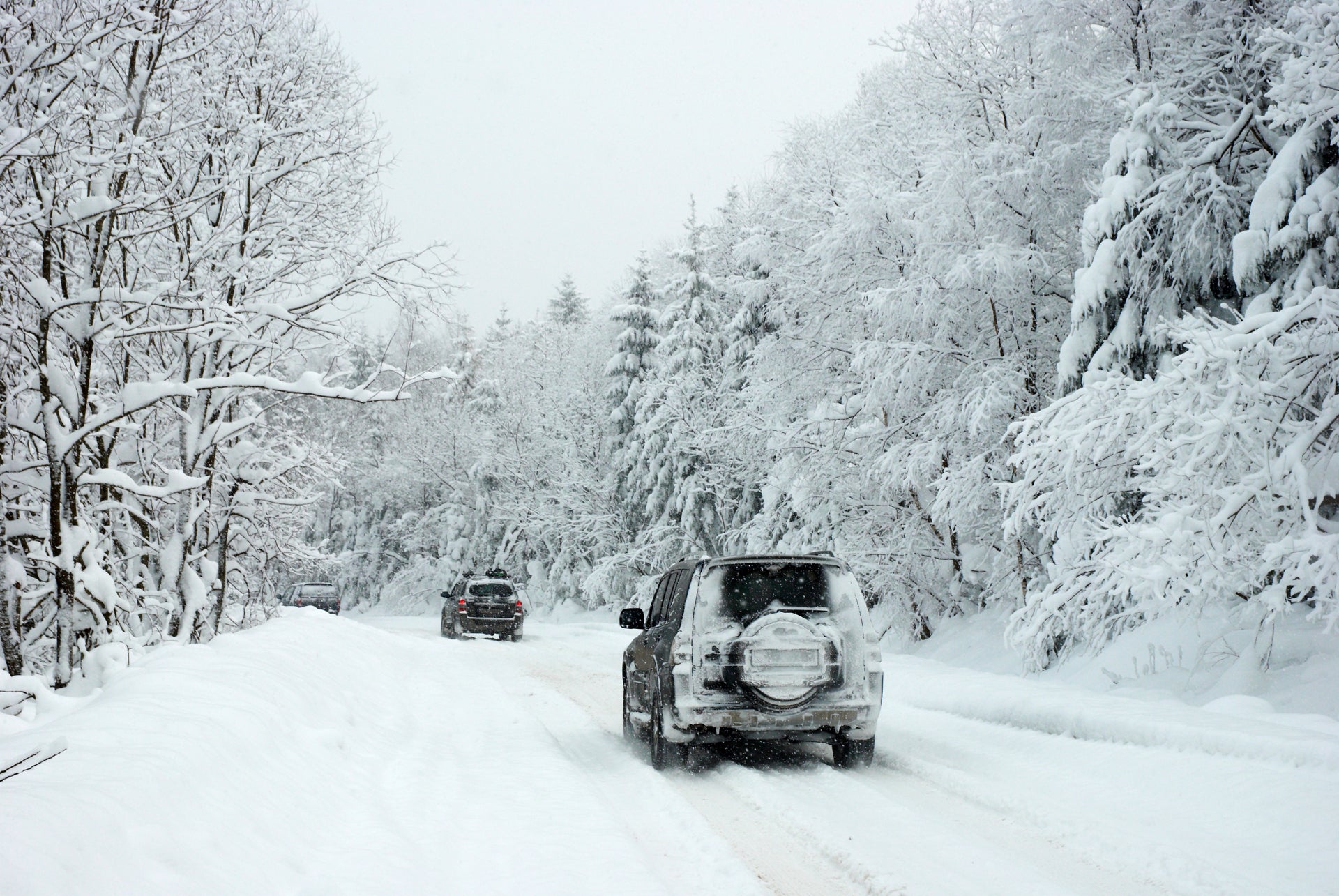7 Common Winter Driving Myths Debunked


Hours of Operation
Mon - Fri
Sat
Sun
7:30 AM - 6:00 PM
8:00 AM - 3:00 PM
Closed

Find us here
7 Common Winter Driving Myths Debunked
Driving can be scary during winter months!
You've seen videos of cars sliding out of control, spinning in circles, and eventually losing control. You may have even experienced this sort of thing yourself. How do you prevent it? The truth is that winter driving is really no different than any other kind of driving — you just need to adjust your techniques for slippery surfaces and limited visibility.
But there are a lot of myths out there about what is and isn't safe to do when you're driving in the snow. And those myths can make things more dangerous than they need to be.
Here we'll debunk 7 common myths about winter driving so that you know what's true and what's not!
You have to warm up your car in the winter
This is one of the most common misconceptions people have about winter driving, but it stems from a time when carburetors were widely used in engines, and it was beneficial to warm them up before driving. Modern technology has since replaced carburetors with electronic fuel injection systems, which can be started immediately without any damage caused by cold weather.
A Bridgestone Auto Care manager, Dustin Stec, advises that there's no advantage to letting a car run for more than a minute before you drive. The best way to warm your engine is by gently driving it until it reaches the optimal temperature, which takes 20 seconds or less on average. After that, driving is the best way to continue warming up your engine.
While it certainly feels good to get into a cozy car in winter conditions, warming up your ride has no benefit for you or your vehicle's performance. The only thing you're doing here is creating excess carbon emissions and burning fuel.
You don't need winter tires
Another one of the biggest myths about winter driving is that you don't need winter tires which is absolutely false.
The rubber compounds used in winter tires stay softer at lower temperatures than those of all-season tires, so they grip the pavement more effectively. They also have deep grooves inside their treads to channel away slush and water so they won't hydroplane, allowing you to maintain control over your vehicle.
Many people don't realize the value of winter tires because they are usually sold as an additional expense. However, when you consider how much it costs to replace your tires or repair your car due to damage from bad weather conditions, it becomes clear that investing in quality winter tires is well worth the money. Additionally, keeping your tires well-maintained can greatly impact your driving and safety on the road.
Add weight to the trunk to improve traction
This myth would have been true in the earlier days of automobiles. Many cars of yesteryear had unfortunate characteristics, including a front-heavy load with rear-wheel drive.
Today, most drivers don't need to use this winter driving hack. That's because modern vehicles are typically front-wheel or four-wheel drive.
Adding weight to your trunk may throw off your vehicle's balance, reducing traction and possibly affecting handling and braking. In a modern car with front-wheel drive, adding weight in the rear will reduce the amount of traction on the front tires rather than increase it. Today, trunk sandbagging is generally recommended only for rear-wheel drive trucks or minivans designed to haul lots of stuff around regularly.
Four-wheel drive vehicles are invincible in the snow
Four-wheel drive lets your vehicle move in slippery conditions and out of deep snow. While it is a fantastic feature for winter driving, it does not make your vehicle invincible. For example, your tires will have nothing to grip in sleet and ice. It's about how you drive, not what you drive.
Having a 4x4 doesn't mean that you can brake faster on any road condition as well. When driving in snow, you should brake gently and leave plenty of space between yourself and the car in front of you (at least three seconds).
You can clear frost off windshields with boiling water
Hot water will surely melt the ice on your windshield — but it can also break your windshield.
Automotive glass is designed to handle extreme temperatures but not to withstand an instant drop from freezing cold to boiling hot. If you use boiling water to melt the frost off your windows, the sudden surge of heat can cause cracks in the glass and make it more susceptible to cracking during subsequent temperature changes throughout the day. The safest way to defrost your windscreen is by relying on the car's heat from the engine and air conditioning to gradually melt the ice before driving.
Another option is using a homemade de-icer and an ice scraper to remove any stubborn patches of ice. To make a homemade de-icer, mix two parts rubbing alcohol and one part water in a spray bottle.
As long as you can see through the windshield, you're good
Depending on your state, having snow on your vehicle is dangerous and could cause you to get a fine. No matter how tempting it is to set off with a partially clear windscreen, make sure your windows are fully de-iced before taking to the road.
It's important to clear all of the windows of your car of snow and ice, including the frost from the bodywork. And don't forget about the lights! Many LED lights don't generate heat as halogen bulbs do. This means they won't melt snow as easily and will still need regular cleaning for maximum visibility.
Deflating your tires results in better traction
The idea behind this misconception is that when you let some air out of your tires, you increase the surface area of the portion of each tire that touches the road. But a recent study revealed that fully inflated tires could perform better in the snow than deflated ones. Moreover, tires that are not inflated properly can compromise vehicle handling — which isn't ideal when driving on slippery roads.
Driving with partially deflated tires will increase the chance of premature wear and could even lead to a blowout which is not good, especially in extreme wintry conditions. It's best to stick to the recommended tire pressures and to check your tire pressure often in the winter because cold temperatures cause air to compact and decrease pressure levels.
Always stick to the facts
Hopefully, we've been able to dispel some of your winter driving myths and put you at ease about the road ahead. If you're still worried about winter driving, don't be — it's not as dangerous as most people make it seem. With good preparation and smart decisions, along with the knowledge you get from our winter driving tips, you can keep yourself safe on the roads during winter driving conditions!
If you need a good set of winter tires or a specialist to look into your vehicle's condition, visit us at Criswell Acura in Baltimore. We're open from Mondays to Saturdays. You can also schedule an appointment with us, so you don't have to wait in line when you come over to visit!

